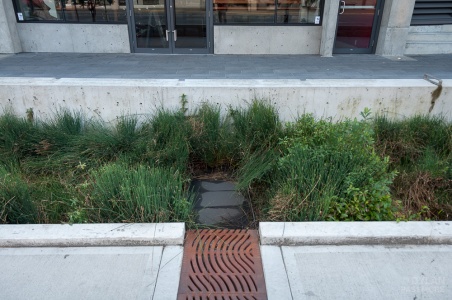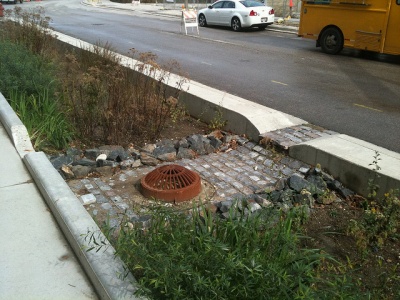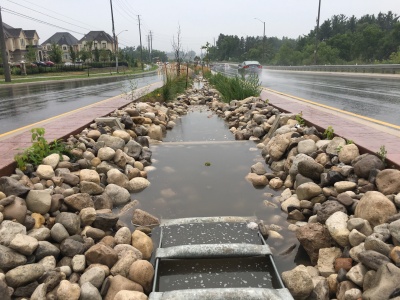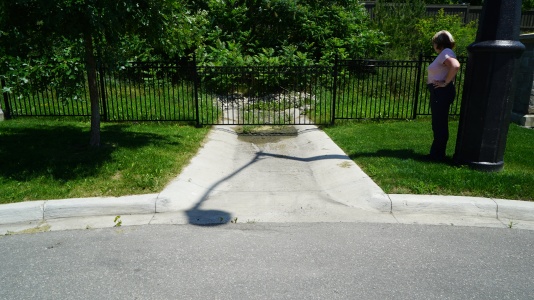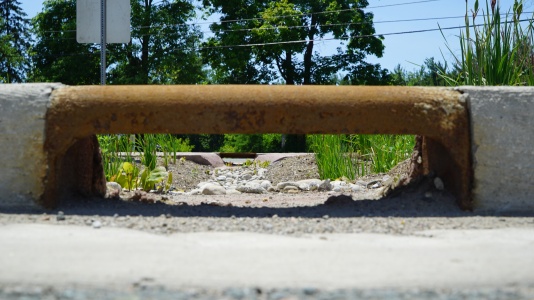Pretreatment features
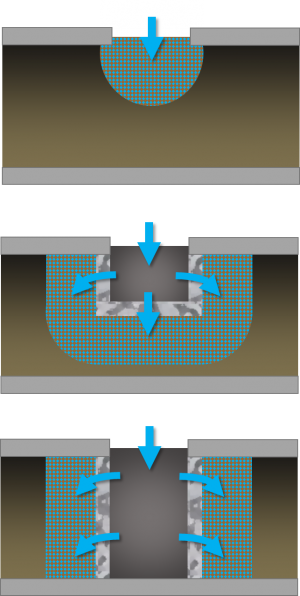
Forebays are a form of pretreatment for open inlets such as curb cuts. Energy of the incoming flow is dissipated, causing suspended particles to drop out of the water. These accumulated particles/sediment can then be easily swept or vacuumed during routine maintenance and doesn't end up clogging downstream filter media or material. A well designed forebay will also spread the flow somewhat, reducing erosion around the inlet. One effective way of achieving this is by surrounding the pad with some form of level spreader on all sides. The level spreading could be a sharp crested weir in metal or concrete, or be more like a soft edged check dam.
Design[edit]
The required volume for a small forebay, serving up to 2 Ha (Vf, m³), may be calculated as:
Where:
- Ac = The area of the catchment (m²),
- R = The capture efficiency (suggest 0.8),
- Lo = The sediment loading rate (m³/Ha/yr), and
- Fc = The cleanout frequency (yrs)
The area of the forebay (A<subf) designed for 80 % capture efficiency (i.e. R = 0.8) may be calculated as:
Where:
- Q = Design flow rate (m³/s), and
- Vf = Volume of forebay (m³).
Check that the forebay depth (df, m) ≤ 0.3 m:
Example calculation[edit]
Gallery[edit]
Solid splash pad preventing erosion from the flow from the inlet. Image credit Dylan Passmore
Forebay connected to drainage area in the roadway with a curb cut, overflow visible in the centre of the feature, level spreading is encouraged with the rock check dams, Milwaukee, WI, Photo credit: Aaron Volkening
Rounded 'river rock' and a series of check dams slow water from this inlet.
This forebay has a rock splash pad to slow water down before it reaches a bioswale.



